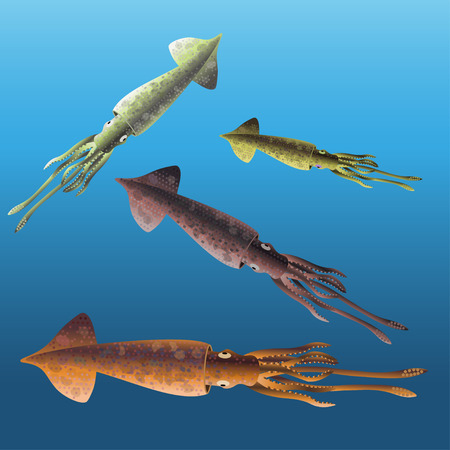Introduction to Trout Fly Fishing
Imagine waking up early on a crisp Saturday morning, packing a picnic, and heading out with your family to a sparkling river. The sun is just peeking over the trees, and everyone is buzzing with excitement. This is what trout fly fishing is all about—a chance to share adventures, laughter, and maybe even a little friendly competition as you try to catch your first trout together.
Across the United States, families have made fly fishing for trout one of their favorite ways to connect with nature and each other. Whether you’re knee-deep in the cool streams of Colorado or casting along the peaceful banks in Pennsylvania, each region offers its own unique take on this timeless pastime. Fly fishing isn’t just about catching fish; it’s about spending quality time outdoors, learning patience, and creating stories you’ll share around the dinner table for years to come.
Why Families Love Trout Fly Fishing
- Outdoor Bonding: It’s an activity that everyone—from energetic kids to patient grandparents—can enjoy together.
- Learning Together: Kids love mastering new skills like casting, tying knots, and spotting fish in clear water.
- Nature’s Classroom: Trout streams are home to all sorts of critters and plants—perfect for curious young explorers.
- Unplugged Fun: Leave screens behind and soak up the sights and sounds of the wild.
A Quick Primer: Gear You’ll Need
| Essential Gear | Description | Family-Friendly Tip |
|---|---|---|
| Fly Rod & Reel | A lightweight rod (7-9 feet) matched with a basic reel is perfect for beginners. | Youth-sized rods make casting easier for little hands. |
| Flies | Tiny lures that look like bugs trout love to eat. | Start with a simple assortment—ask your local shop what’s working! |
| Waders/Boots | Waterproof gear keeps everyone dry and comfy in chilly streams. | Knee-high boots work well for shallow spots if waders seem tricky. |
| Sunglasses & Hats | Protect eyes from sun glare (and stray hooks!). | Make it a tradition: let kids pick out their own “fishing hat.” |
| PFDs (Life Jackets) | Especially important for younger kids around deep or fast water. | Packed as standard safety gear every trip. |
Safety First: What Parents Should Know
- Scout the area: Check current conditions and weather before heading out. Stick to gentle currents and easy access points for younger kids.
- Pace yourselves: Plan breaks for snacks, rest, and exploring along the shore. Not every moment needs to be spent fishing!
- Watch out for wildlife: Teach kids how to respect animals they might see—from deer to ducks—and always practice “leave no trace.”
- Sun & hydration: Pack sunscreen, water bottles, and healthy treats to keep energy high.
Your First Family Fly Fishing Trip: What To Expect?
The first trip is all about discovery! Expect some tangled lines, giggles when someone gets splashed, and lots of questions (“Why do fish jump?”). Let kids help set up their rods or pick which fly to try next. Celebrate every little win—whether it’s a tiny fish or just learning how to cast. And don’t forget—the best memories aren’t always measured by how many trout you catch but by the fun you have together along the way.
2. Understanding American Trout Species
When you’re out fly fishing across the United States, knowing your trout can make all the difference. Each species has its own personality, favorite hangouts, and feeding habits. Let’s get to know the most common trout in North America—rainbow, brown, brook, cutthroat, and lake trout. Whether you’re teaching your kids or swapping stories with friends by the water, understanding these fish will help you pick the right flies and strategies for a memorable day on the river.
Meet the Big Five: North Americas Trout Species
| Species | Appearance | Where to Find Them | Unique Traits |
|---|---|---|---|
| Rainbow Trout | Silvery body with a pink-red stripe; small black spots on back & fins | Western rivers, lakes, stocked in many states | Super active jumpers; love fast-moving water |
| Brown Trout | Golden-brown body with black & red spots, pale belly | Cooled streams, rivers, and lakes nationwide | Sneaky and smart; often feed at dusk or night |
| Brook Trout | Dark green back, worm-like markings, red belly (esp. males) | Cold mountain streams & small ponds (Northeast & Appalachians) | The only native “trout” in the East; actually a char! |
| Cutthroat Trout | Pale yellow to olive body with orange-red slash under jaw | Rocky Mountain streams & rivers (West) | Name comes from that red “cut” mark on their throat; highly regional subspecies! |
| Lake Trout | Dark gray-green back with light spots; forked tail fin | Deep cold lakes in the North and West (Great Lakes, Rockies) | A true giant—can grow over 30 pounds! Loves deep water. |
What Makes Each Species Special?
If you’ve ever watched a rainbow trout leap clear out of the water or spotted a brookie’s brilliant colors in a quiet stream, you know each species is unique. Rainbows are famous for putting up an acrobatic fight (a real thrill for young anglers!), while browns test your patience and skill. Brook trout are beloved for their beauty and are often found in pristine places that feel like secret hideaways. Cutthroats tell stories of wild Western rivers and rugged mountains—they’re a badge of honor for adventurous families. Lake trout? They offer big-fish excitement and epic tales to share around the campfire.
Telling Them Apart: A Simple Guide for Families
- Rainbows: Look for that pink stripe along their sides—it almost shines in sunlight.
- Browns: Spot the gold and scattered red dots; they blend right into leafy riverbanks.
- Brookies: Their white-edged fins and marbled backs look hand-painted!
- Cutthroats: The orange-red slash under their jaw is unmistakable—like nature’s signature.
- Lakers: If it’s big, deep-bodied, and has a forked tail in cold lake water—it’s probably a lake trout.
Your First Step Toward Regional Success
The key to successful fly fishing is matching your tactics to the species and their home waters. As we explore regional strategies in upcoming sections, keep these characteristics in mind—they’ll help you connect with local traditions and catch more fish together as a family.

3. Regional Hotspots and Local Flavors
One of the most exciting things about fly fishing for trout in America is how each region has its own special hotspots and unique traditions. Whether you’re planning a family fishing trip or just love exploring new waters, knowing where to find each trout species—and what makes those places special—can turn every outing into an unforgettable adventure.
Rocky Mountains: Home of the Wild Cutthroat
The Rocky Mountains are famous for their wild cutthroat trout. Clear, cold streams winding through scenic valleys make this area perfect for families who love the outdoors. Local anglers here often use classic dry flies like the Royal Wulff or regional favorites such as the Green Drake. In Montana and Wyoming, you’ll often hear stories at the local fly shop about the “big one” that got away or tips on secret spots only locals know.
Popular Rocky Mountain Cutthroat Rivers:
| River | State | Best Fly Pattern |
|---|---|---|
| Yellowstone River | Montana | Parachute Adams |
| Snake River | Wyoming | Hopper Patterns |
| Poudre River | Colorado | Elk Hair Caddis |
Northeast: Brook Trout Tradition in Appalachian Creeks
If your family loves shady creeks and mossy stones, head to the Appalachians for native brook trout. Here, fishing is more than a hobby—it’s part of local heritage. You might meet folks who tie their own flies using old-school materials like feathers from backyard chickens! Patterns like the Mickey Finn, Pheasant Tail Nymph, or even hand-tied local variations are popular.
Top Brook Trout Spots in the Northeast:
| Creeek/Stream | State | Local Tip |
|---|---|---|
| Loyalsock Creek | Pennsylvania | Tiny black stoneflies in springtime work wonders! |
| Dolly Sods Streams | West Virginia | Toss a bright streamer after a rainstorm. |
| Kennebec River Headwaters | Maine | Try traditional Maine “streamer” flies. |
West Coast: Rainbow Trout and Steelhead Action
The Pacific Northwest is legendary for its rainbow trout and steelhead runs. Rivers like the Deschutes in Oregon or California’s McCloud are not only beautiful—they’re also steeped in fishing history. Many local anglers swear by patterns like the Purple Haze Parachute, soft hackles, or colorful egg imitations when targeting these energetic fish.
Don’t Miss These West Coast Rivers:
- Deschutes River, Oregon: Try caddisfly patterns at dusk for rainbows.
- McCloud River, California: Soft hackle wets mimic local insects perfectly.
- Sacramento River, California: Egg patterns work great during steelhead season.
The Local Flavor: More Than Just Fishing!
No matter where you cast your line, take time to soak up the local flavor! Maybe it’s swapping stories at a riverside diner in Montana, joining a fly-tying night in Vermont, or learning how to spot mayflies with kids on a Pennsylvania creek bank. Every region has its own personality—and that’s what makes fly fishing across America so much fun for families who love adventure together.
4. Tailored Tactics for Every Trout
Step-by-Step Strategies for Fly Selection, Presentation, and Reading the Water
When it comes to fly fishing for trout across America, each species—Rainbow, Brown, Brook, and Cutthroat—has its own personality and preferences. Our family has learned that adapting our tactics makes all the difference. Here’s how you can make every trip a memorable one for you and your kids.
Fly Selection: Matching Flies to Trout Species
Picking the right fly starts with understanding what each trout likes to eat in different regions. Here’s a simple guide based on what’s worked best for our family:
| Trout Species | Best Fly Types | Why They Work |
|---|---|---|
| Rainbow Trout | Elk Hair Caddis, Woolly Bugger | Loves surface action and flashy movement |
| Brown Trout | Hopper Patterns, Streamers | Goes after bigger prey, especially in low light |
| Brook Trout | Parachute Adams, Small Nymphs | Prefers delicate flies in clear mountain streams |
| Cutthroat Trout | Royal Wulff, Ant Patterns | Attracted to colorful dries in slower waters |
Presentation: How You Fish Matters
Step 1: Observe First. Before even casting, we always spend a few minutes watching the water. Are there insects on the surface? Any rises or splashes?
Step 2: Approach Quietly. Trout spook easily. We teach our kids to walk softly and stay low along the bank.
Step 3: Cast Smart.
- Rainbows: Use a gentle cast upstream and let your fly drift naturally back toward you.
- Browns: Cast near overhanging branches or undercut banks where they hide during daylight.
- Brooks: Short casts work best in small streams; focus on pools behind rocks.
- Cutthroats: Present dry flies slowly in broad runs—they’ll often rise boldly!
Reading the Water: Where Each Trout Likes to Hide
| TrouT Species | Favorite Spots (Based on Our Family Trips) | Tips for Success |
|---|---|---|
| Rainbow Trout | Eddies, riffles with steady current | Casting just beyond fast water lets your fly drift into their feeding lane naturally. |
| Brown Trout | Beneath logs, deep holes, shaded banks | An accurate cast into cover is key; don’t be afraid to lose a fly or two! |
| Brook Trout | Pools below waterfalls, quiet backwaters in mountain creeks | Tiny flies and light tippets help when these beauties are spooky. |
| Cutthroat Trout | Sandy-bottomed runs with slow-moving water and plenty of sunlight | A bright dry fly gets noticed—watch for those classic rises! |
A Family Favorite Tip:
If your kids are just starting out, try letting them pick out the fly color or pattern from the box. It makes them feel part of the adventure—and sometimes their wild choices actually work! Each outing is a chance to learn together and build memories that last a lifetime.
5. Seasonal Adventures and Challenges
If you’re planning a family fly fishing trip for trout, knowing when to go and what to expect during each season can really make your adventure special. Trout fishing in the U.S. changes throughout the year, with weather, water conditions, and trout behavior all playing a part in your experience. Here’s how you can make the most of every season on the water.
When to Go Trout Fishing with Your Family
| Season | Best Times for Families | What to Expect |
|---|---|---|
| Spring | Late March to Early June | Active trout after winter, cool water, chance to see hatches; rivers might be high from snowmelt |
| Summer | June to August (early mornings or evenings) | Longer days, warmer temps, more bugs; trout feed early and late, mid-day can be slow due to heat |
| Fall | September to November | Crisp air, fewer crowds, beautiful scenery; brown trout spawn and become more active; variable weather |
| Winter | December to February (where open) | Quieter rivers, slower fish, need patience and warm gear; some streams close for spawning protection |
How Weather and Water Conditions Affect Your Outing
Understanding Trout Behavior by Season
- Spring: Melting snow means higher water—look for calmer spots where trout rest.
- Summer: Trout move to cooler, deeper water during hot afternoons. Fish early or late for best action.
- Fall: Brown and brook trout spawn in fall—watch for them in shallow gravel beds. Cooler temps wake up rainbows too!
- Winter: Slow-moving trout save energy. Use small flies and fish deep pools slowly.
Packing Tips for Every Season
- Dress in layers: Weather can change quickly—bring waterproof jackets even in summer.
- Sunscreen and hats: Even cloudy days can give you a sunburn by the river.
- Snacks and drinks: Keep kids fueled with healthy snacks and plenty of water.
- Safety first: Spring rivers can run fast. Always keep an eye on young anglers near the water’s edge.
- Tackle box check: Bring different fly patterns for changing seasons—mayflies in spring, terrestrials like ants and hoppers in summer, streamers in fall.
A Few Family-Friendly Tips for Success
- If your kids are new to fly fishing, summer is easiest—warm weather means fun even if the fish aren’t biting much!
- Try local parks or stocked ponds for quick trips before heading out on big river adventures.
- If you visit mountain streams in spring or fall, bring a camera—the scenery is just as amazing as the fishing!
The best part about fly fishing through the seasons is discovering something new together as a family—whether it’s spotting a mayfly hatch or catching your first rainbow trout under autumn leaves!
6. Fostering Conservation and Stewardship
Making Conservation a Family Value on the River
One of the best parts about fly fishing for trout in America is that its not just about catching fish—its also about protecting these beautiful places for future generations. When you bring your kids or friends along, you have a special chance to teach them how to care for wild rivers and lakes, no matter if youre chasing rainbows in Colorado or brook trout in the Smoky Mountains.
Catch-and-Release: The Heart of Ethical Angling
Catching a trout is exciting, but releasing it safely is just as important! Here are some simple steps you can share with your family to make sure every fish has the best chance to swim away healthy:
| Step | What To Do | Why It Matters |
|---|---|---|
| Wet Your Hands | Before touching the fish, dip your hands in the water. | Protects the trout’s slime coat and helps prevent disease. |
| Use Barbless Hooks | Pinch down barbs or buy barbless flies. | Makes hook removal quicker and less stressful for the fish. |
| Keep Fish in Water | Unhook trout while they’re still partially underwater. | Fish can breathe and recover faster. |
| Quick Release | If taking a photo, keep it quick (less than 10 seconds). | Avoids extra stress on the trout. |
| Gentle Release | Let the fish swim out of your hands when ready. | Ensures it’s strong enough to survive after release. |
Respecting Local Rules Together
Every region in America has its own fishing regulations—some rivers only allow artificial flies, others might be catch-and-release only. Get your kids involved by reading signs at access points or checking local wildlife agency websites together before your trip. It’s a great way for everyone to understand why rules exist and how they help protect wild trout populations. Make it a fun family tradition to talk about the “rules of the river” before every adventure!
Teaching Kids About Conservation: Hands-On Ideas
- Create a Cleanup Challenge: Bring a small bag and see who can pick up the most litter along the trail or riverbank.
- ID Local Wildlife: Download an app or print a guide so kids can learn about bugs, birds, and plants they spot while fishing.
- Share Stories: After fishing, talk about what you did to help the river and brainstorm ideas for next time—like joining a stream restoration day or writing thank-you notes to park rangers.
Your Family’s Impact Lasts Beyond Today
Every time you practice conservation on your fly fishing trips, you’re leaving these wild places better than you found them. By making stewardship part of your family’s outdoor adventures—from following catch-and-release tips to respecting regulations—you help ensure that America’s rivers will stay healthy for generations of anglers to come. So get out there, have fun, and show your kids how awesome it feels to be good stewards of nature!
7. Making Memories: Family Fly Fishing Stories
If you ask any American family that loves the outdoors, chances are they have a funny or heartwarming fly fishing story to share. Fly fishing for trout isn’t just about catching fish—it’s about creating lifelong memories together, learning new things as a team, and laughing at the ones that got away! Here, we’re sharing some of our favorite family experiences from the rivers and lakes across the U.S., showing how each region and trout species brings its own unique adventures.
Learning Together, One Cast at a Time
When we first tried fly fishing in Colorado, nobody could quite get the hang of casting. My son’s line landed in a tree more times than it hit the water! But every laugh and tangled line made us better. Now, whenever we see a rainbow trout’s flash in the current, we remember those first awkward attempts and how far we’ve come—together.
Catching (and Missing!) Trout Across America
| Region | Trout Species | Family Memory |
|---|---|---|
| Pacific Northwest | Steelhead Trout | Grandpa hooked a big one but slipped on a mossy rock—he still blames his “slippery boots” for losing that fish! |
| Northeast | Brook Trout | My daughter caught her very first brookie after hours of patience—she named him “Mr. Bubbles” before letting him go. |
| Rocky Mountains | Cutthroat Trout | The whole family cheered when mom finally landed a beautiful cutthroat after days of near-misses. |
| Southeast | Brown Trout | We learned how sneaky brown trout can be—they stole our bait more times than we could count! |
The Ones That Got Away (and Why We’ll Never Forget Them)
No matter where you fish, there are always stories about “the big one that got away.” In Montana, my little brother swears he saw a trout “as big as his leg,” but it snapped the line right at the bank. These near-catches give us reasons to return and try again—and they make for the best campfire stories later!
How Fly Fishing Connects Us
Fly fishing has taught our family patience, teamwork, and respect for nature. Each trip is a chance to unplug from screens and reconnect with each other. From early morning drives to late-night s’mores by the riverbank, these shared moments are what really stick with us—long after we’ve packed up our rods.
The real magic? It doesn’t matter if you catch your limit or go home empty-handed. With every cast, you’re building bonds, creating inside jokes, and making memories that last well beyond the water’s edge.


